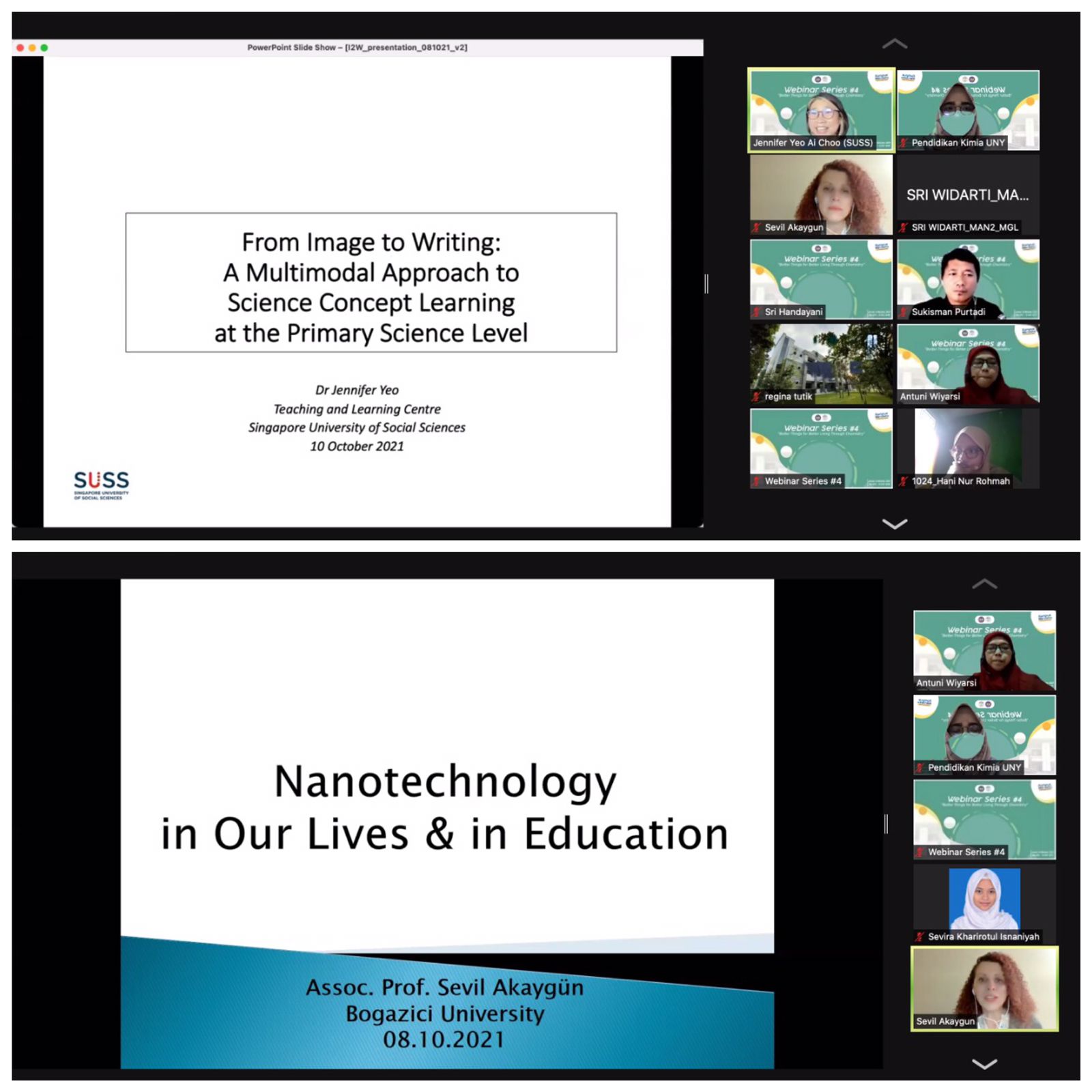You are here
Chemistry Education Department - Webinar Series #4

The Department of Chemistry Education, Faculty of Mathematics and Natural Sciences, UNY has held an online Webinar Series #4 on Friday, October 8, 2021. This activity was attended by a number of 166 participants from among lecturers, teachers, students, etc. There were two resource persons who were invited to fill the webinar series #4, namely Assoc. Prof. Sevil Akaygun from Bogazici University, Turkey and Dr. Jennifer Yeo from the Teaching and Learning Centre, Singapore University of Social Sciences.
At her presentation, Assoc. Prof. Sevil Akaygun conveyed about nanotechnology in our lives and in education. In everyday life, nanotechnology has many applications. Silver nanoparticles are often used to write stickers attached to walls. Assoc. Prof. Sevil started by asking two questions to the webinar participants regarding the advantages and disadvantages of using nanotechnology in life. He delivered a short film entitled The Man with White Suit which tells about the discovery of chemistry by using a special type of fiber which is produced and used in a garment where the garment is dirt free, damage free, wrinkle free, and glows in the dark. This is now becoming a reality with the help of nanotechnology. Therefore, basically nano technology is not a new technology.
As for Dr. Jennifer conveyed about from image to writing: A multimodal approach to science concept learning at the primary science level. Research Dr. Jennifer begins with the results that students find science to be a difficult subject such as Greek, abstract, and very foreign to life. Therefore, students have problems in abstracting science concepts in their learning activities. In addition, the teacher assumes that scientific concepts are proven from the sources of representation used in demonstrations or experiments. Lack of support for bridging abstractions from physical phenomena and scientific concepts is also a problem in science learning. Current learning focuses on “doing” the activity rather than thinking and reasoning about the phenomenon. Therefore, the aim of Dr. Jennifer is to: (1) design a pedagogical approach to support children's science concept learning (conceptual understanding and language competence) and (2) to determine the efficacy of the approach in developing children's conceptual understanding and competence in using scientific language. One of the difficult concepts for students to learn and teach is the concept of heat. Heat as a semantic meaning is a form of energy that causes change. The research method used to investigate the efficacy of the image to writing (I2W) approach in developing conceptual understanding and language competence is quasi-experimental. The main finding in this study shows that I2W has an effect on students' conceptual understanding and language competence. Through the use of images in the I2W approach contribute to supporting novice students in communicating conceptual ideas and mediating in students' thinking and reasoning. Through this webinar series #4, it is hoped that it will contribute to increasing the insight of participants from among lecturers, students, and teachers.
Information System
Kontak Kami
Program Studi Kimia
FMIPA Universitas Negeri Yogyakarta
Kampus Karangmalang Yogyakarta 55281
Telp. (0274)586168 Pes. 115
Email: kimia@uny.ac.id atau s1kimia@uny.ac.id
Copyright © 2025,
